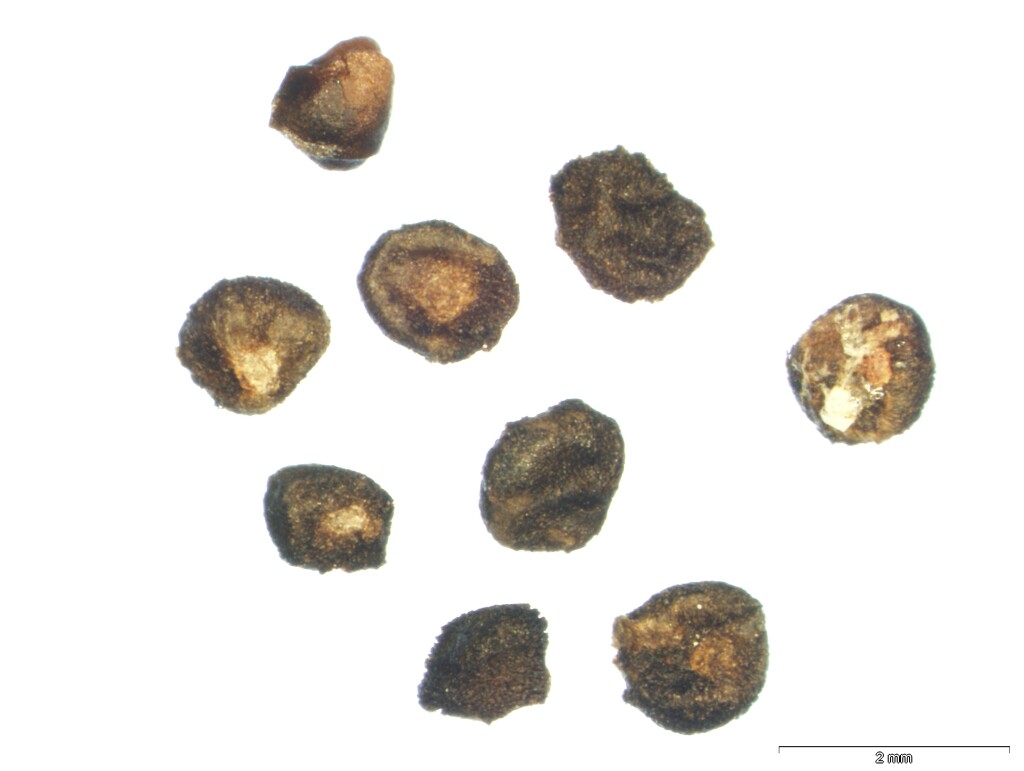Eucalyptus carolaniae
RuleTree to c. 20 m tall; bark rough on main stems, fibrous, thick, grey, persistent, eventually shedding in ribbons. Juvenile leaves sessile on distinctly winged stems, opposite for many pairs, broadly ovate to suborbicular, to 10 cm long, 7 cm wide, discolorous, glossy and light green, becoming blue-green and dull; adult leaves petiolate, alternate, lanceolate, 16–29 cm long, 2–4 cm wide, concolorous, green, glossy, reticulation dense, with numerous island and intersectional oil glands. Inflorescences axillary, unbranched; peduncles flattened, to 2 cm long, 7-flowered; buds subsessile to shortly pedicellate, ovoid-cylindrical with sharply conical operculum, to c. 1 cm long, 0.5 cm diam., ribbed, scar present; stamens flexed; anthers dorsifixed, oblong; ovules in 4 vertical rows; flowers white. Fruit sessile or subsessile, cylindric to truncate-ovoid, to 1.1 cm long, 0.9 cm diam.; disc descending; valves 4, rarely 3, rim level or below; seed dark brownish-black, flattened-ellipsoid, shallowly reticulate, hilum ventral. Flowers summer.
GipP. Known from a single population near Mount Martha on the Mornington Peninsula where it apparently hybridises with E. viminalis.
One of several recently segregated species that are somewhat intermediate between E. cypellocarpa and E. goniocalyx (see also note under E. litoralis). From the former it can be distinguished by its smaller habit, persistent rough bark and broader, paler juvenile leaves. From E. goniocalyx it is distinguished by its winged seedling stems, relatively narrower, apiculate juvenile leaves, longer peduncles, often shortly pedicellate buds and basally tapered fruits. Neither E. cypellocarpa nor E. goniocalyx are known to occur naturally on the Mornington Peninsula.
 Spinning
Spinning